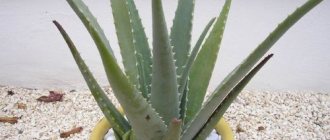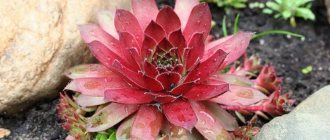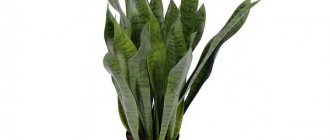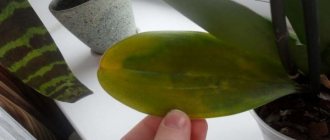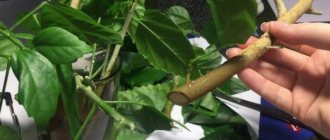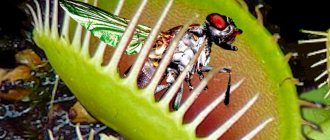To increase the number of rare varieties of roses in their flower beds, flower growers use cuttings. This is the best method for beginners; it is more reliable than grafting or propagation by layering.
Not all rose seedlings take root equally well. This article presents methods for successful rooting at home. They are affordable, simple and suitable not only for bush flowers, but also for those given as cut flowers.
Choosing roses for cuttings
To get a high percentage of rooting, the choice of planting material must be correct. Not all varieties take root equally well.
The easiest way to adapt when cutting is:
- Climbing, especially in varieties with small flowers.
- Polyanthas and hybrid-polyanthas reproduce well with green shoots in the summer, and partially woody shoots in the fall.
- Ground cover.
- Miniature ones take root easily even with the help of water.
- Floribunda varieties take root in half of the cases.
Difficult-to-root include:
- park;
- climbing large-flowered;
- scrubs;
- Most of them are hybrid teas.
Successful cuttings also depend on the color of the flower. The most suitable are burgundy and red, followed by pink and white. The yellow ones are the most difficult to root, they have the lowest survival rate of planting material and they die from infections more often than others.
Harvesting cuttings
The cuttings should be medium in thickness and development. A 2-3 year old with a large center takes a long time to adapt and may begin to rot when moved to open ground. Young ones, usually red in color, are also discarded due to slow rooting. They do not have time to fully develop before the cold weather and freeze in winter.
There are usually 3 options for cuttings suitable for propagation:
- Stems are the most common planting material.
- Lignified - sufficiently matured and stunted annuals with a diameter of 0.4-0.5 cm. These are usually rooted in the spring.
- Semi-lignified - cuttings are carried out in the summer, the central part of the shoot is used.
If there are single varieties or bushes on the site, you can try cutting off shoots with one bud. But it should be remembered that they can grow into weak plants that are not prepared for wintering. The optimal option is 2-3 internodes, and for yellow roses it is better to leave 4 or more.
Here are the basic steps for preparing a cutting:
- The length of the shoot is at least 10-18 cm.
- The upper cut is smooth, made at a right angle, departing from the sheet to a height of 0.5-2 cm.
- The same distance from the kidney is measured from below, but you need to cut it at an angle of 45 degrees, with a sharp, disinfected knife.
- Remove thorns and lower leaf blades. Cut the top ones to half length. This will help retain moisture inside the seedling.
The prepared cuttings should be placed in water, to which you can add rooting preparations, for example, Heterauxin. For the same purpose, a honey solution is used: for 1 tbsp. take 1 tsp. honey and some crushed rose leaves. The liquid needs to be changed every 2 days and after 15-20 days a light compaction will appear on the lower cut - callus.
Next, the seedling can be planted in a flowerbed or wait for long roots to appear.
The disadvantage of this method is the lack of oxygen for proper development in the aquatic environment and, as a result, rotting.
In regions with cold winters, bushes grown by cuttings wait out the frosts in a dry basement with good ventilation, buried at an angle in the sand. Optimal storage temperature is +1…+3 °C and humidity 65-70%. The next season, young bushes remain in the open ground for the winter.
Timing of cuttings of roses
The cutting period depends on the climate zone, as well as the variety of rose and the characteristics of the formation of its shoots. In the warm season, the preparation of planting material and its rooting can be done twice. This is mid-spring: in April-May in greenhouses. A prerequisite for certain imported roses, which are first grown in greenhouses and then grown in open ground.
The best time for propagation is in mid-summer: late June - early July, when the shoots are just beginning to wooden. This is usually the period before flowering, when the buds gain color. Cuttings used later have a lower rooting percentage.
Often, after autumn pruning, parts of the bushes remain that are a pity to throw away, and gardeners try to save them for subsequent spring planting. To prevent freezing of most of the shoots you need:
- Remove all leaf blades and thorns.
- Seal the sections with paraffin to prevent early germination.
- Store the cuttings in a cool place: basement, cellar or in the bottom compartment of the refrigerator.
Useful tips
To increase your chances of getting a positive result, you need to consider that:
- Only fresh ones can be taken for cuttings;
- you should choose the middle part of the stem, not yet aged, with three living buds;
- the optimal length of the segments is 20 cm;
- The sprouted stems should be covered with a bottle or jar; the air in the room is too dry.
If the bouquet was received in winter, then you can use another option: save the selected stems until spring, but not sprouted. In this case, the prepared cuttings are buried in the ground, and a dry shelter is built on top, which could protect the planting material from frost.
To increase the chance of getting a plant of the desired variety, it is recommended to experiment with as many stems as possible. The success of a business does not always depend solely on the experience of the gardener; some cuttings turn out to be unsuitable for germination.
Let's see how roses from a bouquet are rooted; there are many useful tips for those who want to get a new bush.
Cuttings of roses in summer
It is easier to carry out cuttings with summer shoots than with autumn shoots. They have enough time to adapt to the flowerbed chosen for them and prepare for wintering. Cuttings taken at a later date are less able to tolerate frost. The optimal time for cutting is June, and planting can be done until the end of July.
Cuttings are prepared in the manner described above, and they can be planted directly in open ground, without using greenhouses or greenhouses. However, it is necessary to choose an area without strong wind and bright sun.
The best option would be diffused light penetrating the flowerbed through the tree crowns. The soil should be loose and well permeable to moisture.
The cuttings are deepened into the soil at an angle and dug in. At first, a greenhouse made of plastic containers is needed on top; glass jars are also used. If a significant number of roses are planted, then a small greenhouse is made from wooden supports and polyethylene. The seedlings do not require special care; they only need timely watering.
In winter, young plants are covered with jars or a greenhouse, which can only be removed the next season - in the spring.
Which stems can produce roots?
Experienced gardeners claim that it is not possible to germinate a root from every flower that is taken out of a bouquet.
You can place more hope on roses grown in the country of your residence; flowers imported from Ecuador, Holland or Kenya were grown in special conditions; during the industrial cultivation of flower crops in these countries, special fertilizers are used. In open ground conditions and without special care, it is unlikely to be possible to obtain healthy, full-fledged plants of these varieties.
Problems with the germination of Dutch flowers also arise for the reason that for long-term storage of marketable buds, they are treated with special chemical preservatives. A cutting taken from such a flower cannot germinate and, accordingly, it will not be possible to grow a bush either.
You should know that root formation is more active on cuttings obtained from red or white roses. As a result of selective breeding, it is almost impossible to germinate blue, orange or yellow flowers.
For germination, it is recommended to use only fresh stems; the longer the buds stay in the vase, the less chance of successfully obtaining a new plant.
Talking about how to grow a rose from a bouquet at home in winter, we note that it is much more difficult to germinate stems in winter than in summer and spring; the activity of root formation depends on the season.
Cuttings of roses in spring
For spring cuttings, it is necessary to make a greenhouse with pre-prepared soil: from turf and leaf soil, sand, ash and vermiculite in the proportion: 2: 2: 1: 0.5: 0.5. Length of the cut part of the plant: 10-15 cm.
When planting, it is necessary to powder the lower cut of the seedling with a growth stimulator and dig it 7-10 cm into the ground. If you dig deeper, this will slow down the formation of the root system. The sprouts should be 7-8 cm apart from each other.
The most important period is 15-20 days after planting. At this time, it is necessary to provide the cuttings with conditions for development:
- Watering is moderate; excess liquid will lead to rotting.
- High humidity level 80-90%. The leaf plates should be covered with droplets of water; for this you can use a spray bottle.
- Protection from direct sunlight. At high temperatures and hot air, ventilation is necessary in the morning and evening.
- A thorough inspection for the first signs of disease or decay.
After the root system has appeared, the rose can be transplanted into another small container 9-12 cm in size. To improve drainage properties, the top layer of the substrate 3-3.5 cm high should be sand.
Rooting in water
This can occur if the cutting sits in a container filled with water for at least 2 weeks. The water will need to be changed daily; it is best to use distilled water. The material that is being prepared for germination is placed in a well-lit but cool place.
After the roots appear, the stem is planted in a pot filled with soil. If, over time, new buds appear on the cuttings, then the rooting process was successful. It is impossible to remove a seedling from the soil; replanting it is impossible.
Unusual ways to grow roses from cuttings
Various methods are used for rooting. Here are the most successful:
- in water;
- using potatoes;
- Trannoy method;
- burrito;
- in a plastic bag.
Planting rose cuttings in potatoes
The most popular way to root rose shoots is in potatoes. In a selected sunny area, protected from drafts, dig a hole 15 cm deep. To retain moisture in the soil, one third of its bottom should be filled with a layer of washed sand. Clean young tubers from their eyes and insert 20 cm cuttings prepared in advance into the holes. Place the potatoes in the ground at a distance of 15 cm from each other and cover 2/3 with soil. For the first 3-4 days, the plants must be covered with glass jars.
The advantage of this method is that the lower cut is constantly moistened and thanks to the potato, the rose receives nutrition and starch.
The main thing is not to forget about systematic watering and moisten the soil with sweet water every 5 days: 2 tsp per 200 ml. Sahara. After 14-15 days, begin hardening and remove the cover for a short time. After another 2 weeks, the jars can be removed completely.
Rooting cuttings in a bag
The effect of fog and high humidity can be easily achieved in another way, using a bag. It is necessary to put sphagnum moss in it, previously soaked in diluted aloe juice, in a ratio of 1:9 or a disinfected substrate. Next, inflate the polyethylene, tie it and hang it on the window. The roots will appear in 30-31 days. Afterwards, the cuttings need to be taken out and planted in pots.
Burrito Method
This method is actively used by flower growers in the USA and is becoming popular in Russia. This method is often used to root purchased roses. However, not everyone considers it effective.
The selection of cuttings occurs during spring pruning, and many shoots that are usually sent to the trash can become beautiful rose bushes in the future. Their main difference from other selected planting material is thickness; they should not be thin. A pencil or finger can be a guide; the length should be at least 15-20 cm. It is important in the early stages of preparation to discard all parts of the plant with defects or darkening. This is a sign of mold and one affected cutting can infect all the others.
The lower cut of the prepared shoots is sprinkled with Kornevin or treated with Epin, and wrapped in moistened newspaper and placed in a bag. You can use fabric instead of paper. Place in a cool place with a temperature of +15...+18 °C for 2 weeks, during which small roots should form.
Once every 7 days, the bundle must be opened and inspected for the presence of fungus or blackened seedlings, which are also removed. When the paper dries out, you can slightly moisten it. After callus has formed, the roses are moved to a flowerbed for further growth and adaptation.
Trannoy method
This method involves selecting cuttings after the main wave of flowering. Experts suggest choosing plant shoots with fading rosettes and two leaf blades and cutting off the middle part with swollen buds until leaves appear from them. The main thing is not to miss this moment. The length of the cutting is at least 20 cm. All greenery must be torn off, leaving only a couple at the top.
Plant several pieces at a time in a hole at 45 degrees in the selected area. On top of each group you need to place a 5-liter plastic jar with the neck cut off. This is reliable protection for planting material until frost, despite the appearance of leaves and new shoots. To supply the roots with oxygen, the soil around the plantings must be loosened. It is important not to forget about watering.



